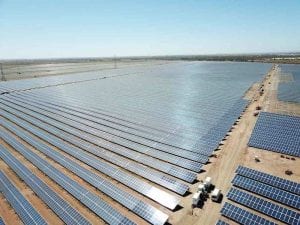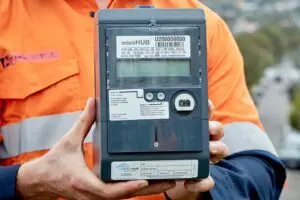A significantly tighter grid reliability standard has been extended for another three years to cope with the increasing pace of the transition to wind and solar, and the growing threat of so-called “tail-risk” events that can be sparked by extreme weather.
The interim reliability standard was introduced in mid 2020 – lifting the standard from 0.002 per cent of expected “unserved energy” to 0.0006 per cent. It was designed to ensure enough firm capacity – such as battery storage – to deal with a one-in-10 year summer event.
The Australian Energy Market Commission, the industry rule maker, says that interim reliability measure (IRM) will now be extended for another three years, while a permanent measure is agreed upon by regulators, policy makers and the industry.
“With the transition expected to occur at a great scale and pace across at least the next five years, the AEMC considers that the IRM has an important role to play in managing ‘tail risk’ or high impact events with a low probability of occurring in the system until 2028,” the AEMC said.
A tail risk event is a relatively new expression that has been used by the Australian Energy Market Operator to describe situations that are hard to predict, but take into account the growing number of extreme weather events as global warming accelerates.
This can have an impact on electricity supplies for a number of reasons – bringing down transmission lines in a major storm, putting severe stress on fossil fuel generators because of extreme heat, or can cause deep lulls in production from wind and solar.
The reliability measure refers only to ability to generate sufficient power and transport that on transmission lines. It doesn’t refer to the threat of multiple “contingency” events which often happen at a local level, and where most blackouts and power shortages occur.
AEMO first made a big deal of tail risk, at least publicly, in 2019, when then CEO Audrey Zilbelman warned of the threat of multiple coal plant failures in the event of extreme heat, and pleaded for new tools and mechanisms to deal with it.
AEMO’s annual Electricity Statement of Opportunities (ESOO) is now based around the 0.0006 per cent interim measure, and is the prompt for new capacity auctions and commissions.
This is particularly the case in NSW where the Liddell coal plant generator has recently closed, and where the country’s biggest coal generator, the 2.8GW Eraring facility, is currently scheduled to shut in August, 2025, although there is expectation that at least some units may be kept open for the following summer.
Its most recent ESOO update, released in February, forecast a potential breach of the IRM in NSW in late 2025, in Victoria a year later, and then in South Australia in 2027 and Queensland in 2028.
The lighter dotter line in the graph above highlights the IRM, compared to the existing standard in the thicker dashed line above it.
It should be noted that this ESOO assessment only accounts for what AEMO describes as “confirmed projects”, so does not include the capacity auctions being held by NSW, and to be launched in Victoria and South Australia later this year.
It’s not so much a forecast of a blackout, but a prompt for what needs to be done to minimise the risk of one.
It has prompted the contracts for facilities such as the Waratah Super Battery (image above), which will be one of the biggest “standby” batteries in the world when complete in 2025, and the major expansion of a minimum two-hour firming capacity auction by the NSW government.
The extension means that AEMO can now write multi-year contracts for capacity beyond the end of 2025, and the AEMC says it is worth doing, despite the likely increase in costs associated with those contracts.
The extension of the IRM to 2028 is being “fast-tracked” by the AEMC, but is open to submissions until August 24, 2023. A possible extension beyond 2028 will be considered in 2026 as part of a broader review.











